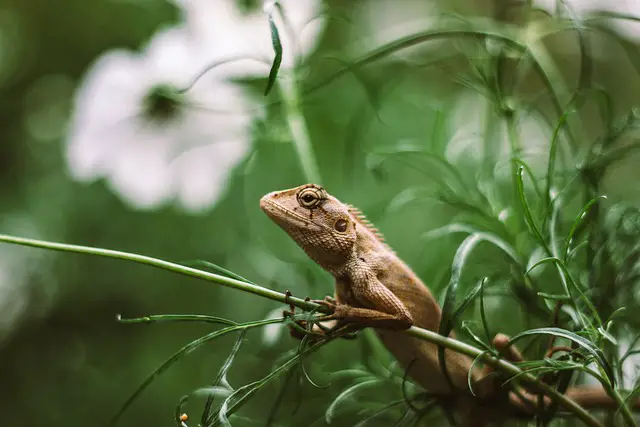Have you ever seen a lizard turn brown when it dies? This is a common belief among many people, but is it true? The answer is no; lizards do not turn brown when they die.
When a lizard dies, its body undergoes rigor mortis, which causes the muscles to stiffen and the body to become rigid. This can give the appearance of the lizard turning brown, but it is simply a result of the body’s natural processes.
Understanding the truth about this myth is essential, as it can lead to misunderstandings about the natural world. Lizards are fascinating creatures, and there is much to learn about them. By dispelling this myth, we can focus on learning more about these amazing animals and their unique characteristics.
The Color of Lizards
One of the fascinating things about lizards is their ability to change color to blend in with their environment. This is known as camouflage, and it helps them to avoid predators and catch prey. However, a common misconception is that lizards turn brown when they die.
While it is true that some lizards, such as chameleons, can change color when they are stressed or threatened, this does not happen after they die. The color of a dead lizard depends on various factors, including the species, age, and cause of death.
For example, some species of lizards, such as the green anole, may turn a darker shade of brown or gray after they die. Others, such as the desert iguana, may turn a pale gray or white. The color change is often due to the loss of blood circulation and the breakdown of pigments in the skin.
It is important to note that not all lizards change color when they die, and even those that do may not turn brown. So, while the idea of lizards turning brown after death may be a popular myth, it is not necessarily true.
The Process of Decomposition
When a lizard dies, its body undergoes a process of decomposition. This process can take several weeks or months, depending on various factors such as temperature, humidity, and the presence of scavengers.
During the first stage of decomposition, the lizard’s body begins to cool down, and rigor mortis sets in. This makes the body stiff and difficult to move. In addition, as the body cools, the lizard’s skin may become darker due to the pooling of blood in the lower parts of the body.
As time passes, the body begins to break down, and bacteria consume the tissues. This leads to the release of gases and a characteristic odor. The skin may also loosen and slough off, revealing the underlying tissues.
Eventually, the body will be reduced to a skeleton, with only the bones remaining. Depending on the conditions, this process can take several months or even years. During this time, the bones may become discolored due to exposure to the elements.
Overall, the decomposition process is a natural and necessary part of the life cycle. While it may seem unpleasant, it is an essential process that helps to recycle nutrients and return them to the ecosystem.
Factors Affecting Color Change
When a lizard dies, it undergoes several physical changes, including a color change. The color change is influenced by several factors, including:
- Decomposition: As the lizard’s body decomposes, the skin loses its moisture and elasticity, causing it to shrink and wrinkle. This can cause the lizard to appear darker or browner in color.
- Exposure to sunlight: If the lizard’s body is in the sun, the heat can cause the skin to dry out and become darker.
- Age and species: Some species of lizards are naturally darker or browner in color than others, which can be more apparent after death. Additionally, older lizards may have more pigmentation, which can also affect color change.
It’s important to note that not all lizards will turn brown after death. Some may retain their original color, while others may become lighter or paler. The color change is also not an immediate process and may take several hours or even days to become noticeable.
Overall, while color change can be a natural part of the decomposition process, it’s not a reliable indicator of whether a lizard is dead or alive and should not be used to determine a lizard’s health or status.
Conclusion
After conducting research and examining various sources, it can be concluded that lizards do not turn brown when they die. While some species of lizards may change color for multiple reasons, such as temperature or mood, there is no evidence to suggest that death causes a color change.
It is important to note that the color of a lizard can change due to various factors, including age, gender, season, and environment. Additionally, some species of lizards are naturally brown, while others are not. Therefore, it is essential to consider these factors when observing the color of a lizard.
Overall, it is essential to rely on credible sources and scientific evidence when researching topics related to animals and their behavior. While myths and misconceptions may exist, it is necessary to separate fact from fiction to understand the natural world around us better.




